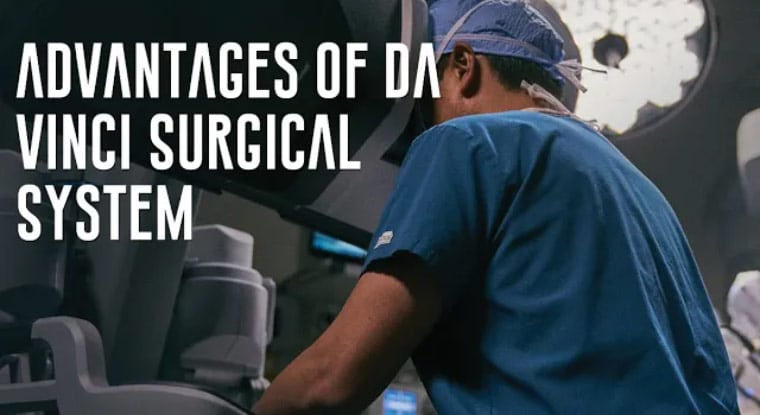The da Vinci Surgical System is a minimally invasive procedure where the operation is performed with the help of robotic instruments inserted through minor incisions. The surgeon sits at a console that offers a three dimensional view of the patient’s anatomy and full control over the surgical instruments.
The da Vinci system provides a suitable alternative to the more traditional open surgery where a surgeon has to make large incisions through skin and muscle to reach the affected organ. It also is an improvement to other minimally invasive procedures, such as laparoscopy. Now a patient has the opportunity to choose robot assisted laparoscopy over conventional laparoscopy.
Advantages of the da Vinci Surgical System
1. Increased precision
The precision with which miniaturized robotic instruments move through the body is comparable to that of a scalpel in a surgeon’s hand. Robotic instruments can access parts of the anatomy that are delicate or hard to reach with no risk of accidental puncture or laceration. The margin of error is very low because precision increases accuracy.
2. Reduced blood loss, pain and scarring
Blood loss, pain and scarring are incidental to any surgical procedure. Blood loss is especially critical and it is a significant contributor to mortality rates in procedures such as hepatic and thoracic surgery. The da Vinci Surgical System requires very little cutting and the incisions made are very small. Advantages of the smaller incisions include less pain, smaller amount of blood loss and a shorter healing period after the surgery. The high definition cameras and the 3D view in the da Vinci Surgical System also offer increased visibility, which reduces the chances of puncturing blood vessels or any other part during the surgery.
3. Faster recovery
Patients who undergo surgery using the da Vinci system report faster recovery. They require less after care and the risk of post surgery complications is remarkably reduced. This is especially the case with post surgery infections, which are a concern in cases of open surgery because of the larger wounds. Patients undergoing this kind of surgery realize the objectives of their treatment quickly and they can return to their normal activities with no problems.
Conclusion
The da Vinci Surgery System is available for almost all forms of surgery, including gynecological, kidney and colorectal. Areas such as urology are known to have been at the forefront of adopting this system to urological surgeries and to date, most urologists, including the members of the Advanced Urology Institute, champion the use of the da Vinci Surgery System.
For more information about the da Vinci Surgery System, visit the “Advanced Urology Institute” website.


